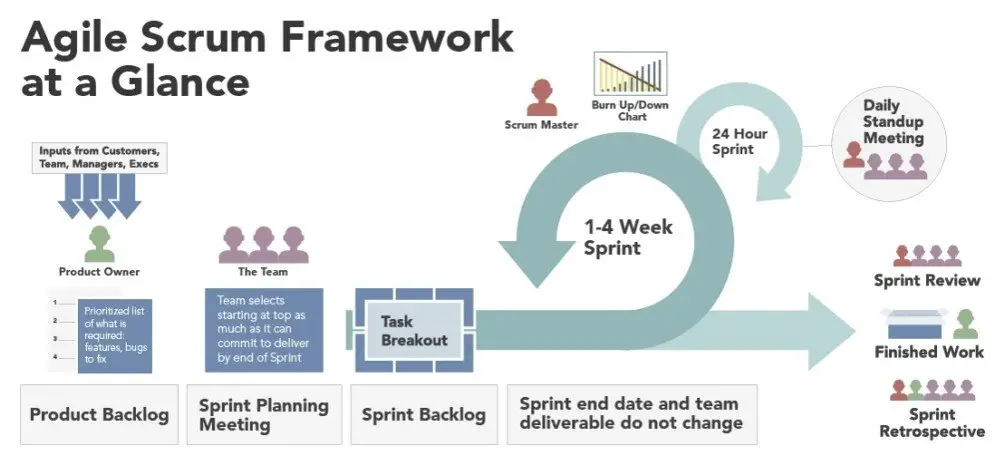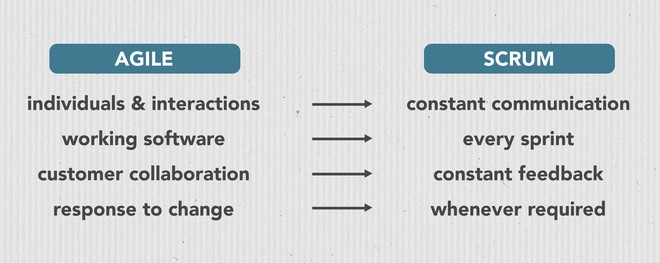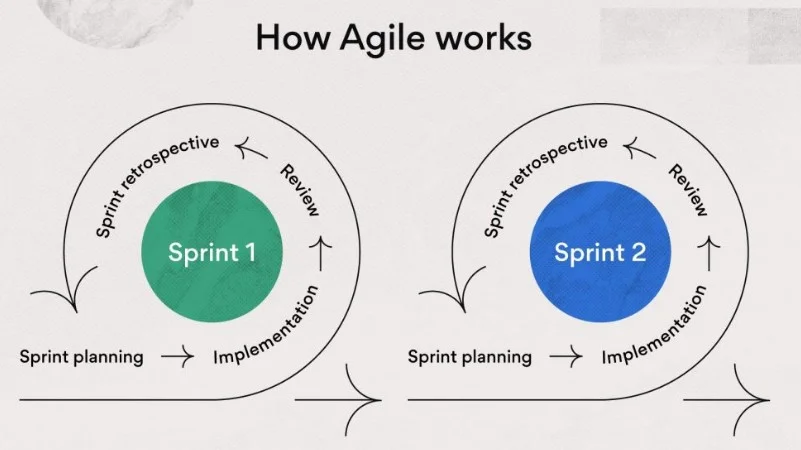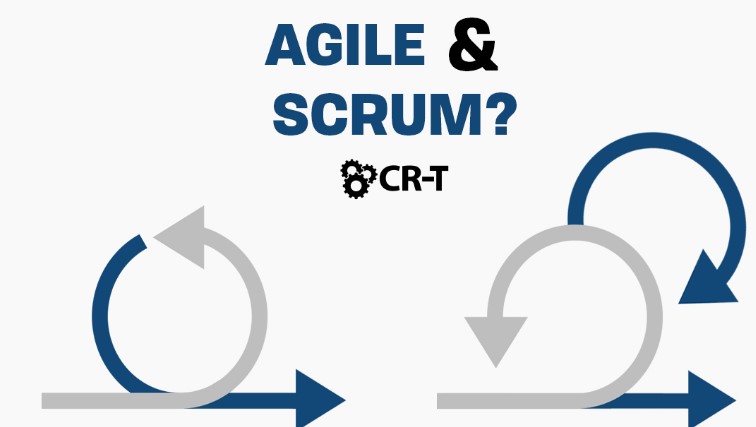In the evolving landscape of project management, the choice of methodology can significantly influence the success of a project. Amidst various frameworks that guide teams through the complexities of project delivery, Agile and Scrum stand out for their adaptability and efficiency. These methodologies have transformed how projects are approached, shifting the focus towards incremental development and customer collaboration.
The difference between Agile and Scrum primarily lies in their scope and application. Agile is a philosophy encompassing a set of principles for software development, where requirements and solutions evolve through collaborative effort. Scrum, on the other hand, is a specific implementation of Agile, providing a detailed framework for managing and executing projects in short cycles known as sprints.
Agile and Scrum are both geared towards adapting to change and delivering value quickly. While Agile represents a broad set of principles that can be applied to various types of projects, Scrum offers a structured approach with defined roles and processes, making it particularly suitable for projects where quick turnaround and frequent reassessment are crucial. The distinction between the two is essential for organizations aiming to enhance project outcomes through tailored methodologies.

Agile Fundamentals
Definition and Core Principles
Agile is a project management and software development approach that prioritizes flexibility, customer satisfaction, and iterative progress. Unlike traditional methodologies that rely on a linear, sequential approach, Agile encourages adaptive planning, evolutionary development, early delivery, and continual improvement. It emphasizes collaborative effort among self-organizing and cross-functional teams.
The core principles of Agile, derived from the Agile Manifesto, focus on:
- Individuals and interactions over processes and tools
- Working software over comprehensive documentation
- Customer collaboration over contract negotiation
- Responding to change over following a plan
The Agile Manifesto
The Agile Manifesto is a declaration of four foundational values and twelve supporting principles that guide Agile project management and software development. Introduced in 2001, it serves as the bedrock for Agile practices, emphasizing efficiency, flexibility, and customer satisfaction.
Key Benefits and Applications
Agile methodologies offer several benefits:
- Enhanced customer satisfaction through early and continuous delivery of valuable software
- Increased flexibility that allows teams to adjust to changes quickly
- Improved product quality due to iterative testing and feedback
- Better project control and risk management
Applications of Agile span across software development, marketing projects, organizational change initiatives, and more, showcasing its versatility and adaptability to various types of projects.
Scrum Essentials
Scrum Definition and Framework
Scrum is a framework within the Agile methodology that provides a structured yet flexible way to manage and complete projects. It is characterized by fixed-length iterations called sprints, usually two to four weeks long, allowing teams to deliver work in small, manageable chunks.
Roles Within a Scrum Team
A Scrum team typically consists of:
- Product Owner: Responsible for defining the product vision and managing the product backlog.
- Scrum Master: Acts as a coach to the team, ensuring that Scrum practices are followed.
- Development Team: A group of professionals who do the work of delivering the product increment.
Scrum Ceremonies and Artifacts
Scrum is defined by specific ceremonies and artifacts that facilitate project management:
- Ceremonies: Sprint Planning, Daily Scrum, Sprint Review, and Sprint Retrospective
- Artifacts: Product Backlog, Sprint Backlog, and Product Increment
Agile vs. Scrum
The Conceptual Difference
While Agile is a broad philosophy with guiding principles for flexible project management, Scrum is a specific implementation of Agile, offering a detailed framework for managing work.
Scope and Applicability
- Agile is applicable to a wide range of projects beyond software development, including marketing and organizational change initiatives.
- Scrum is best suited for projects that benefit from a structured approach, particularly when rapid iteration and feedback are critical.
Key Similarities
Both Agile and Scrum emphasize iterative progress, team collaboration, and customer feedback. They share a common goal of delivering high-quality products in a flexible, efficient manner.
Implementation Context
When to Use Agile
Agile methodologies are ideal when project requirements are expected to change, or when there is a need for frequent reassessment of project directions. It’s suitable for environments where innovation, flexibility, and speed are valued.
Optimal Scenarios for Scrum
Scrum is most effective in projects that can be divided into small, incremental parts with clearly defined goals for each sprint. It’s particularly beneficial for complex projects requiring rapid changes and frequent deliverables.
Combining Agile and Scrum in Practice
Implementing Scrum as an Agile framework allows teams to practice Agile principles with more structure and clarity. This combination can lead to efficient project management, ensuring that teams remain flexible and productive.

Key Differences
Process Structure
Agile is a philosophy that promotes flexible project management, whereas Scrum is a framework that offers a specific structure for implementing Agile. The Agile approach is fluid and adaptable, focusing on the continuous delivery of value. Scrum structures this delivery into sprints, with each sprint having a fixed duration and a set of deliverables.
Team Roles and Responsibilities
In Agile, roles can be fluid, with team members wearing multiple hats based on the project’s needs. Scrum, however, defines specific roles: the Product Owner, responsible for the product backlog; the Scrum Master, who facilitates the process; and the Development Team, who execute the tasks.
Flexibility and Adaptability
Both Agile and Scrum value flexibility and adaptability. However, Scrum’s structure provides a predictable rhythm for changes through its sprint cycles, whereas Agile’s broader principles allow for more spontaneous adaptation to change.
Project Management and Control
Agile offers broad guidelines for project management, emphasizing responsiveness to change and stakeholder involvement. Scrum provides clear mechanisms for project control, including daily scrums, sprint reviews, and retrospectives, fostering transparency and continuous improvement.
Success Factors
Agile Success Criteria
Successful Agile implementation hinges on:
- Active stakeholder engagement
- Open communication
- Empowered teams that can make decisions
- Regular reflection on practices and processes
Scrum Success Measures
Scrum’s success is often gauged by:
- Consistent delivery of product increments
- Adherence to sprint goals
- Team cohesiveness and collaboration
- Effective use of Scrum ceremonies to foster continuous improvement
Common Challenges and Solutions
Implementing Agile or Scrum comes with challenges such as resistance to change, lack of understanding of the methodology, and difficulties in role adaptation. Solutions include:
- Comprehensive training and education on the chosen methodology
- Gradual implementation to ease the transition
- Clear communication of benefits to all stakeholders
Industry Applications
Agile in Software Development
Agile methodologies revolutionized software development by enabling teams to respond to the fast-paced changes in technology and user demands. It encourages incremental development and testing, leading to quicker releases and higher quality products.
Scrum in Product Development
Scrum has become a go-to framework for product development beyond software, including hardware and service design. Its structured approach helps teams manage complexity and deliver innovative solutions efficiently.
Broader Industry Adoption Examples
Agile and Scrum have found applications in education, healthcare, and even construction, showcasing their adaptability. For instance, Agile principles guide curriculum development, and Scrum can organize hospital process improvements.
Choosing the Right Methodology
Project Size and Complexity
- Smaller projects with less complexity might benefit from Agile’s flexibility.
- Larger, more complex projects may require Scrum’s structured approach to manage scope and resources effectively.
Team Size and Distribution
- Agile methodologies can be more effective in small to medium-sized teams where communication is straightforward.
- Scrum can accommodate larger teams by organizing them into multiple Scrum teams, each focusing on different sprints or aspects of the project.
Stakeholder Involvement and Feedback Cycles
- Projects requiring frequent stakeholder feedback will thrive under Agile, where adjustments can be made rapidly.
- Scrum’s sprint reviews provide regular, but time-boxed, opportunities for stakeholder feedback, making it suitable for projects with defined delivery milestones.
Both Agile and Scrum emphasize team collaboration, customer satisfaction, and adaptive planning. However, their differences in structure, roles, and application make them suitable for different project environments. Understanding these nuances allows project leaders to select the methodology that best aligns with their project goals, team dynamics, and stakeholder expectations.

Frequently Asked Questions
Can Agile and Scrum be used together?
Yes, Agile and Scrum can be used together effectively. Scrum is a specific framework that operates under the broader principles of Agile. By adopting Scrum, teams are essentially implementing one of the many ways to practice Agile methodologies, focusing on incremental and iterative work cycles.
Is Scrum only for software development?
While Scrum originated in software development, its principles and framework are applicable to any field requiring project management and iterative improvement. Organizations across various industries have adapted Scrum to manage complex projects beyond software development, demonstrating its versatility and effectiveness.
How does Agile differ from traditional project management?
Agile methodologies differ from traditional project management approaches by prioritizing flexibility, collaboration, and customer feedback over rigid planning and documentation. Traditional models often follow a linear path, while Agile encourages iterative development, allowing teams to adapt and evolve their project scope based on ongoing insights.
What are the main advantages of using Scrum?
The main advantages of using Scrum include improved project transparency, enhanced team accountability, and increased ability to manage changing priorities. Scrum facilitates regular reflection and adjustment, helping teams to continuously improve their processes and deliver high-quality products in a timely manner.
Conclusion
Choosing between Agile and Scrum is not about selecting the better methodology but about finding the right fit for a project’s specific needs. Agile offers a broad philosophical framework for approaching project management with flexibility, while Scrum provides a structured yet adaptable process for implementing Agile principles. Both methodologies aim to address the challenges of traditional project management by emphasizing communication, collaboration, and customer satisfaction.
As project environments become increasingly dynamic, the ability to adapt and respond to change is paramount. Agile and Scrum, with their focus on iterative development and stakeholder involvement, offer valuable tools for teams looking to navigate the complexities of project delivery. Understanding the distinction and potential integration of these methodologies can empower organizations to achieve superior project outcomes and drive innovation.

